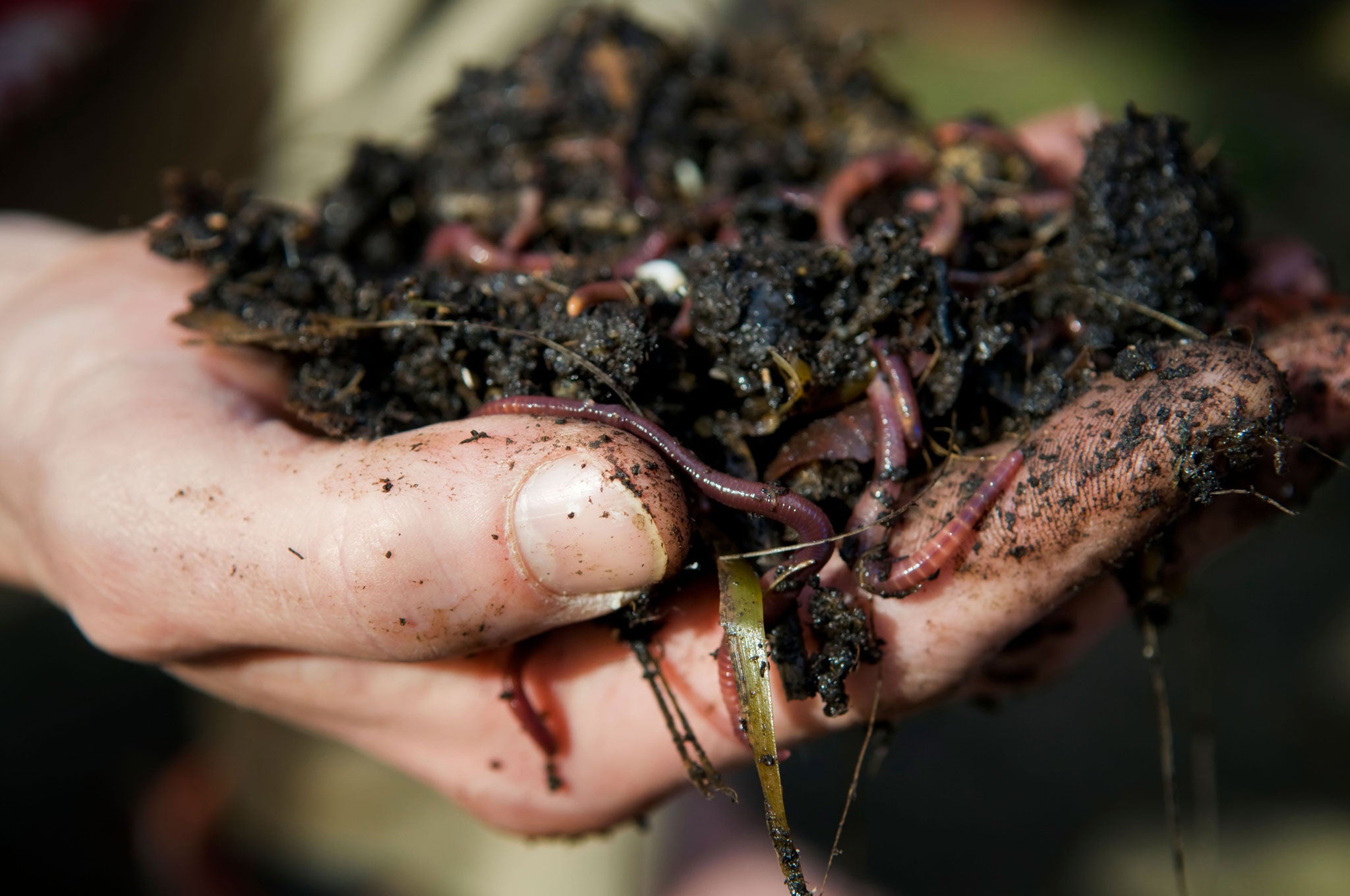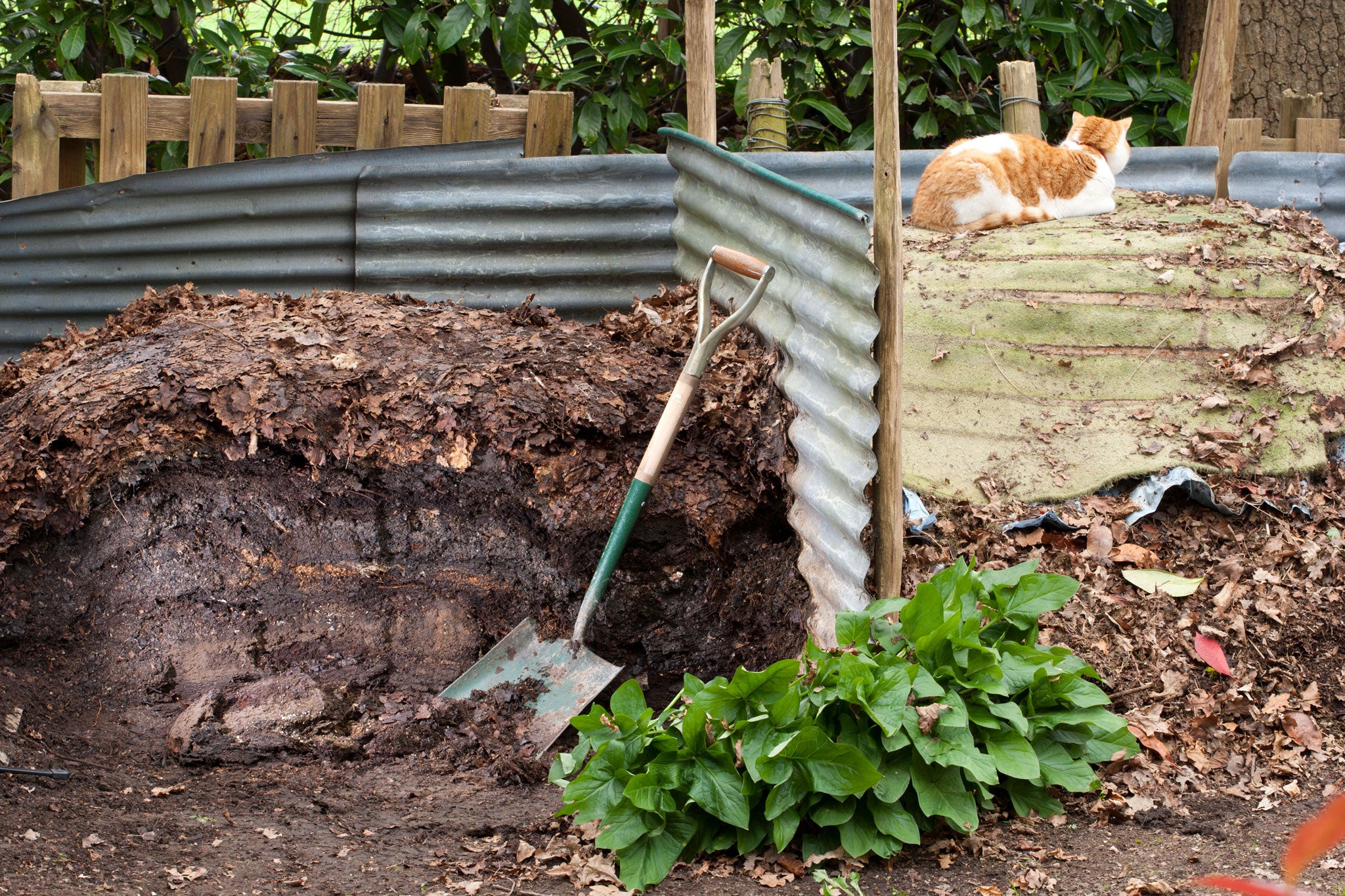Anna Pavord: 'No garden can truly thrive without regular mulching - be it of the homemade, hops or mushroom variety'
Late winter/early spring is the best time to do the mulching, says our gardening correspondent

I could easily become a mulch bore. Perhaps I already am, and nobody has been kind enough to tell me. But of all the things you can do for your garden, this, to me, seems the most important. Give, don't just take. And late winter/early spring is the best time to do the mulching, before too much new growth gets in the way. It's a job that has dominated the past two weeks in the garden: 10 buckets of mulch before I move on to another job.
Why buckets, you may ask (though you might easily not – I do allow that my obsession with mulch will not perhaps be widely shared). Wouldn't a wheelbarrow be quicker? Well, yes, it probably would, but we have a very steep garden. The mulch is dumped by a flatbed truck in the yard down by the house and the mulching mostly has to be done on the ground that slopes quite steeply up from the yard. There are steps between the one place and the other. Hence the buckets.
My mulch of choice is mushroom compost. This stuff starts off as a kind of well-rotted farmyard manure and is used by mushroom growers as a medium on which to grow their crop. Periodically they chuck it all out and start with a fresh load. So it is a product that is rarely in short supply. Growers need to get rid of it and there are plenty of gardeners like me who, having worked their way through other kinds of mulch, have decided that this one gives the best results. It is friable. It is nutritious. And crucially, it is free of weed seeds.
A mulch is a layer of organic stuff (I'm not including the various kinds of plastic sheeting that are also sometimes called mulches) that you put on top of the ground where you grow things, whether fruit, flowers or vegetables. The mulch does three good things. It helps to prevent moisture evaporating from the surface of the soil. It cuts down the amount of annual weeds that will be able to germinate (though it won't suppress bindweed or other bullies, it does at least make their roots easier to get out of the ground). A composted mulch adds fertility to the soil. And, as worms gradually pull it down into the ground, the humus adds bulk to thin soils and opens up dense ones, such as clay. In short, you can't afford to do without it.
We work our gardens hard and often clear away the stuff that, if left, would provide its own mulch for the plant that had produced it. We cut down top growth. We rake off leaves (well, some people do – I just wait for the wind to blow them into a slightly less inconvenient place). So, in some form, we need to put back what we take out. With a little bit extra as well.
Why do I use mushroom compost for mulching, rather than the stuff we make in our own compost heaps? We have two bins side by side, each about 2.5m x 1.6m and built up with railway sleepers. So there's no shortage of homemade compost. While one bin is being filled up with garden waste, the other is cooking. The system works fine as long as I empty out the cooked stuff before the other bin overflows. So, at the same time as carting mushroom compost, I have been digging into the compost that's 'made' because soon the second compost heap will be full and I'll need the space.
The homemade compost is dark and crumbly, still studded with bits of our garden: brittle orange stems of royal > fern, remnants of spurge, pieces of the bright yellow tubers of Iris milesii. It's lovely stuff and my aim is to give a bucketful to every shrub and tree in the garden. I've never yet got round everything. But that's because I also use our compost in containers, topping them up with bought-in multi-purpose compost. I haven't enough homemade compost to cover the whole garden and anyway, my own stuff is not free of weed seeds.

I don't mulch the borders with wood chips or composted bark because I use them on some of the paths up the bank, and I don't want the two to look the same. But wood-based mulches are usually too coarse to be used easily among bulbs and perennials and, in rotting, they rob the ground of nitrogen. I have used spent hops, of which there is a free supply thanks to our local brewers, but the hops clog together unpleasantly in the wet and are not a good colour.
The kind of gardener who worries will tell you that mushroom compost is alkaline and may change the nature of your soil. Yes it is, but you'd need to use vast quantities of it to have a discernible effect on the natural pH of the ground. If I had the kind of woodland garden you find in Cornwall and the west coast of Scotland, thick with magnolias, camellias, rhododendrons and other things that don't like an alkaline soil, I'd be using leaf mould, not mushroom compost for my mulch.
But there is a curious pleasure in looking at a bed that has been mulched, particularly one pierced by new stems of hellebore and clumps of snowdrops. Partly it's pleasure in the fact that, for this patch anyway, you've done your best. You've cut the dead leaves from the hellebores, cleared away the straw-like remains of the herbaceous geraniums that will come on after the hellebores and whose buds are just beginning to show on the surface of the ground. And as a final flourish, you've put on the mulch. It'll be chaos soon enough. But for this moment, this patch is not needing anything else. Nothing that I can understand anyway.
I've loved the garden this past month and that's partly because the snowdrops have been so spectacular. Splitting a few large clumps and spreading them about will be top of my list of jobs for the month ahead. But it's also because, unusually, there has been enough time to tinker with small things. I've been round the hydrangeas, cutting out some of the older stems that are sagging on the ground and getting in the way of their neighbours. I've worked my way round the handsome evergreen mounds of bupleurum, cutting back the old flowered stems and gently persuading them into shapes that will be less likely to catch the wind. Every day, I've sniffed the glorious scent of a daphne called 'Jacqueline Postill' and thanked it very much for its flowers. It's been a good start to the year.
WEEKEND WORK
WHAT TO DO
* This is an important time for pruning, particularly those shrubs that flowered in the second half of last summer, or which produce coloured stems for winter effect.
* Abelia: Cut out any branches that have died back or been damaged through winter. Make the cut just above a new green shoot. On overgrown bushes, thin out some of the old wood.
* Bougainvillea: Best done in February, but if you have forgotten, act now. Shorten all the main growths by a third and cut back all the laterals close to the base. Cut out weak, straggly growths altogether.
* Campsis: Hard prune this rampant climber by cutting back the previous year's growths to within 8cm/3in of where they started.
* Passion flower: Thin out overgrown plants at ground level.
WHAT TO BUY
* A quick session with a good brush can do wonders for the illusion of order in a garden. My favourite is a smallish (25cm) red-handled brush with stiffish bristles (re-foundobjects.com, £6.50). Put with it Refound's metal-handled dustpan (£6.75) and you are set up for the season
Join our commenting forum
Join thought-provoking conversations, follow other Independent readers and see their replies
Comments